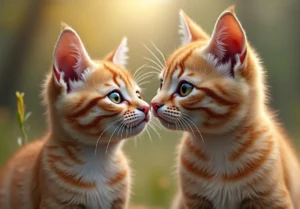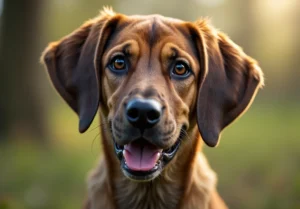Have you ever noticed that cat eyes are vertical? Wondering why that is the case? Let’s dive into the fascinating world of feline vision and explore the reasons behind this unique feature.
Evolutionary Adaptation
Cat eyes are actually evolved perfectly for the art of hunting. Their vertical orientation gives them a unique advantage in the wild. Picture this: as a cat stalks its prey, those vertical slits allow them to gauge distances accurately. This gives them a laser focus, honing in on their target with precision. It’s like having a built-in target finder, a natural tool for the hunt. This evolutionary adaptation has truly set cats apart as expert hunters in the animal kingdom.
Pupil Shape
Now, let’s delve into the significance of a cat’s vertical pupil shape. Think about it – that unique vertical shape isn’t just for looks. It actually plays a crucial role in enhancing their visual acuity and depth perception. By adjusting the size of their vertical pupils, cats can regulate the amount of light entering their eyes. This allows them to see clearly in both bright daylight and low-light conditions, giving them a distinct advantage in the wild. So next time you see a cat’s eyes, remember that their vertical pupils are not just for show – they’re a key part of their survival toolkit.
- Enhanced Vision: The vertical pupils of cats allow them to have excellent vision in both bright and dim lighting conditions, making them effective predators in various environments.
- Depth Perception: The unique shape of cat eyes helps them judge distances accurately, which is crucial for successful hunting and navigating their surroundings.
- Protection: Vertical pupils can also quickly constrict to tiny slits, protecting cats’ vision from excessive light exposure, ensuring their eyes stay safe and functional.
Nocturnal Hunters
Cats are natural-born predators, and their vertical slit pupils play a crucial role in their hunting prowess, especially in the cover of darkness. These unique pupils allow cats to excel as nocturnal hunters by providing them with enhanced depth perception and improved accuracy in low-light conditions. When their eyes are dilated, the vertical alignment of the slit pupils helps them gauge distances effectively, enabling them to ambush prey with precision. This evolutionary advantage gives cats a competitive edge over their prey, making them formidable hunters even under the cloak of night.
Light Sensitivity
The vertical orientation of cat eyes is not just about hunting; it also serves a vital function in regulating the amount of light entering their sensitive retinas. Cats have a tapetum lucidum, a reflective layer behind their retinas that enhances their night vision by reflecting light that passes through the retina. The slit pupils can narrow to thin vertical lines in bright light, reducing the amount of light entering the eye and preventing overexposure that could damage their delicate retinas. This unique adaptation allows cats to maintain optimal vision in varying light conditions, from dimly lit spaces to bright daylight, ensuring their eyes remain protected and functional throughout the day.
Additional Unique Insight:
– The vertical slit pupils of cats also help them effectively judge the speed and direction of moving prey, giving them a tactical advantage when stalking and pouncing on their targets.
Remember, the next time you marvel at a cat’s captivating eyes, know that their vertical alignment is not just aesthetically pleasing but a marvel of evolutionary adaptation designed to help them thrive as skilled nocturnal hunters.
Wide Field of Vision
Cat eyes are uniquely vertical for a reason – their design grants them a wide field of vision. Imagine being able to detect movement and potential prey from various angles effortlessly. The vertical orientation of their pupils allows them to see more of their surroundings at once, making them excellent hunters in the wild. Next time you see a cat watching you intently, remember they have a keen eye for even the slightest movements thanks to their vertical pupils.
Unique Anatomy
The intricate anatomy of cat eyes plays a crucial role in their vertical orientation. Specialized muscles and structures work together to make vertical pupils possible. One such structure is the tapetum lucidum, a reflective layer behind the retina that enhances their night vision. This, combined with vertical pupils, gives cats a significant advantage in low-light conditions. So the next time your feline friend sees something in the dark that you can’t, it’s all thanks to their unique eye anatomy.
Fun Fact: Did you know that cats can rotate their ears independently to pinpoint the source of a sound? This, combined with their vertical pupils, makes them incredibly efficient hunters.
Optical Illusions
Cat eyes with vertical pupils create intriguing optical illusions, especially in low light. The vertical alignment of their pupils expands in darkness, giving the appearance of narrow slits, enhancing their night vision and depth perception. This unique design may seem eerie but serves a practical purpose in helping cats excel in hunting and navigating dimly lit environments. The vertical orientation also allows for precise control of the amount of light entering the eye, protecting their sensitive retinas and aiding in focusing on fast-moving prey. Next time you catch your cat’s gaze in the dark, appreciate the optical magic happening within those captivating eyes.
Mysterious Gaze
The mysterious gaze of a cat is undeniably captivating, partly due to their vertical pupils. This distinctive feature adds to their enigmatic charm, creating an intense and almost hypnotic effect. When a cat’s eyes dilate or constrict, the vertical pupils transform, drawing you in with an alluring allure. This mesmerizing gaze not only adds to the mystique of cats but also helps them excel as predators in the wild. So next time your feline friend fixates you with their penetrating stare, remember that their vertical pupils play a significant role in that mesmerizing gaze that has fascinated humans for ages.
- Predator Deception: Cats’ vertical pupils can deceive both predators and prey by appearing larger in low light, making them seem more intimidating to potential threats.
- Enhanced Depth Perception: The vertical alignment of cat eyes aids in accurate depth perception, crucial for pouncing on prey with precision.
- Quick Adjustment: Cats can quickly adjust the size of their vertical pupils, allowing for swift adaptation to changing light conditions during hunting or exploring.
- Night Vision Advantage: The slit-like design of vertical pupils enhances cats’ night vision by controlling the amount of light entering the eye, improving their ability to see in the dark.
- Protective Mechanism: Vertical pupils protect cats’ sensitive retinas from excessive light exposure, helping maintain their vision sharpness in various lighting environments.
Fun Facts
Cat eyes have vertical pupils for a good reason – it helps them better control the amount of light entering their eyes. This unique shape allows cats to adjust quickly to both bright and dark environments, giving them a visual advantage over their prey. Imagine having night vision built right into your eyes!
Did you know that the vertical slit pupils also give cats a wider field of view? This design helps them detect movement from various angles, making it easier for them to spot potential threats or prey. It’s like having built-in motion sensors in their eyes!
Another fascinating fact about cat eyes is that they contain a layer of cells called the tapetum lucidum, which reflects light back through the retina. This reflective layer enhances their night vision and gives them that eerie glowing effect in the dark. Talk about having a secret weapon for nighttime shenanigans!
Let’s not forget the mesmerizing colors of cat eyes. From deep amber to striking green, their eyes can come in a kaleidoscope of hues, adding to their mystique and charm. Whether their eyes are as yellow as the sun or as blue as the ocean, one thing’s for sure – cat eyes are truly captivating.
But here’s the cherry on top: cats also have a third eyelid called the nictitating membrane that helps protect their eyes and keep them moist. This extra layer of defense comes in handy during grooming sessions or when they’re in full predator mode. Cat eyes are truly a marvel of nature, blending beauty, function, and mystery in one mesmerizing gaze.
Alex, a passionate animal lover, has experience in training and understanding animal behavior. As a proud pet parent to two dogs and three cats, he founded AnimalReport.net to share insights from animal experts and expand his knowledge of the animal kingdom.




